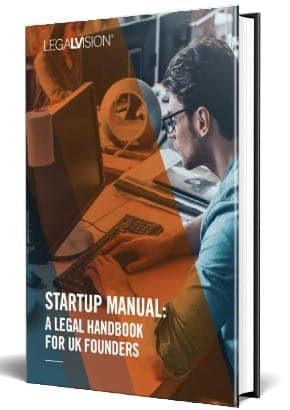Table of Contents
As a startup owner, you will likely discover numerous expenses arising. For example, your startup may need a piece of expensive equipment like a complex manufacturing unit or a fleet of vehicles. Leasing can be an alternative to raising debt or equity financing to acquire use of the asset. There are two different types of leasing: operating and financing leases. Operating leases give you the use of an asset for a relatively short period. In contrast, financing leases last for much longer and usually give you the ability to take ownership of the asset at the end of the lease agreement. This article will evaluate the difference between operating and financing leases so you can determine which is right for your startup.
What Are Leases?
The following assets are commonly the subject of leases:
- airplanes and helicopters;
- ships and other watercrafts; and
- machinery and manufacturing equipment.
Leases are a form of contract with the following characteristics:
- the lessor is the party that grants the lessee (your startup) use of an asset that the lessor owns;
- the lessor retains ownership of the asset throughout the term of the lease; and
- the lessee pays the lessor a fee to use the asset, similar in principle to rent.
All leases require the lessee to take good care of the asset while in the lessee’s use. However, not all leases require the lessee to maintain and insure the asset at the lessee’s expense. Generally, there are two key types of leases:
- operating leases; and
- finance leases.
Operating Leases
Operating leases are shorter-term leases. The predominant purpose of an operating lease is to give the lessee the benefit of the use of an asset for usually between two to five years.
Under an operating lease, the lessor retains ownership of the asset and is responsible for the maintenance and repairs. Note that exceptions apply to the maintenance and repairs of aircraft and shipping leases. Furthermore, the lessor will also typically insure the asset.
Operating leases do not, by themselves, give the lessee the right to take ownership of the asset at the end of the lease. However, parties can agree to convert an operating lease to a financing lease to achieve this.
Compared to financing leases, operating leases offer more flexibility. For example, you may have the right to terminate the lease early.
Accounting and Tax Considerations
Now, as with financing leases, you record the benefit your startup obtains under the operating lease as an asset on your balance sheet. This benefit depreciates in line with the length of the lease. This reflects the fact that as a lease comes closer to its expiry, it is worth less. You charge this depreciation in successive years as a non-cash expense for tax purposes.
Likewise, under your startup’s liabilities, you record the obligations to make the payments as a liability. You write this down each year as the lease approaches its expiry.
Continue reading this article below the formFinancing Leases
There are three purposes behind a financing lease:
- to give the lessee the right to use an asset without having to purchase it outright;
- to allow the lessee the ability to use the asset over its economic life with the right to take ownership of the asset at the end of the agreement; and
- to structure payments in such a way that is tax advantageous for the lessee while compensating the lessor with a premium amount paid throughout the agreement (similar to interest).
Importantly, ownership of the asset remains with the lessor for the life of the lease. However, the repairing and maintenance costs fall to the lessee. Likewise, you will also insure the asset.
The terms of the lease will specify the price the lessee pays to take ownership of the asset at the end of the agreement. This may be at a nominal cost or a predetermined price, such as the market value of the asset at the time of the lease’s expiry. In some cases, the agreement may obligate the lessee to purchase the asset. Depending on how the agreement specifies the purchase price, this obligation may be to the benefit or detriment of the lessee.
Accounting and Tax Considerations
From an accounting and tax perspective, financing leases are more complex than operating leases. However, the most recent changes to accounting policies have made them substantially similar.
Remember that a financing lease’s purpose is to effectively transfer ownership of the asset over time to the lessee. From a legal perspective, this happens at the end of the lease, subject to its terms. But from an accounting perspective, the goal is to apportion payments under the lease so that your balance sheet reflects that you are obtaining the benefit of the use of the asset, as well as paying towards its acquisition. The portion of the payments made under the lease to this effect are assets for accounting purposes. Your startup then charges depreciation on the value of the accruing asset value under the lease.
The obligation to make payments under the lease is treated as a liability. Certain accounting treatments distinguish the portion of lease payments that act as interest paid to the lessor. This has certain tax implications.

LegalVision’s Startup Manual is essential reading material for any startup founder looking to launch and grow a successful startup.
Key Takeaways
Operating leases are suitable for where your startup only needs the asset for a relatively short period and where your startup does not wish to incur maintenance and insurance obligations. Finance leases are similar in principle to loans in that you make payments over a long period to acquire ownership over the asset. The difference is that ownership remains with the lessor rather than with you. However, at the end of the financing lease, your startup can acquire ownership of the asset.
If you need help with your startup, our experienced startup lawyers can assist as part of our LegalVision membership. For a low monthly fee, you will have unlimited access to lawyers to answer your questions and draft and review your documents. Call us today on 0808 196 8584 or visit our membership page.
We appreciate your feedback – your submission has been successfully received.











